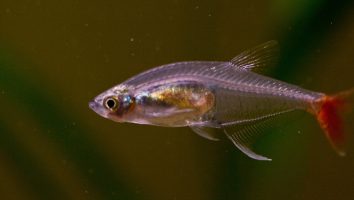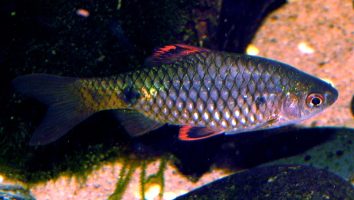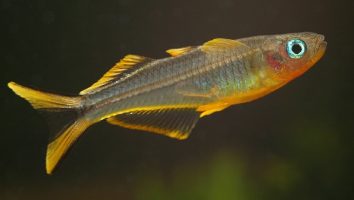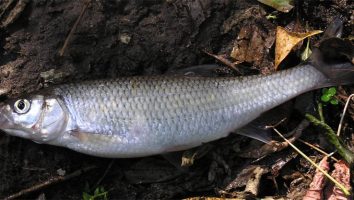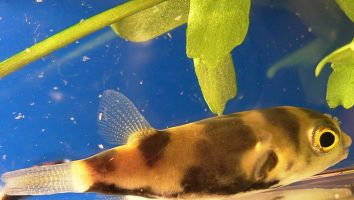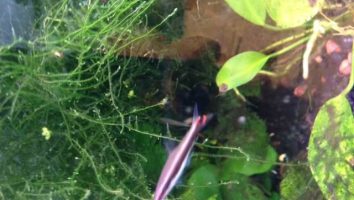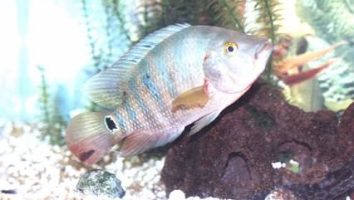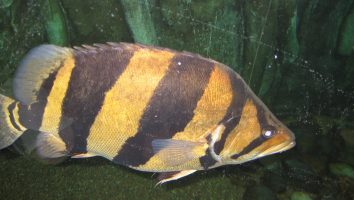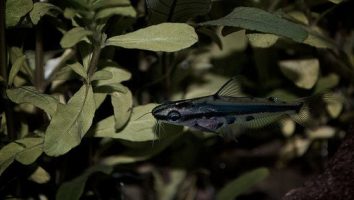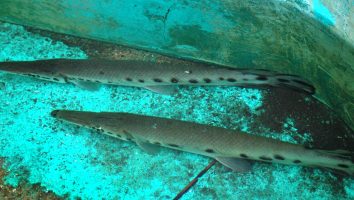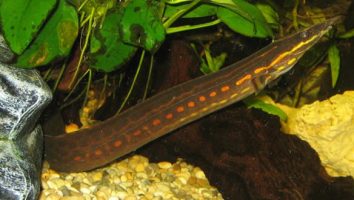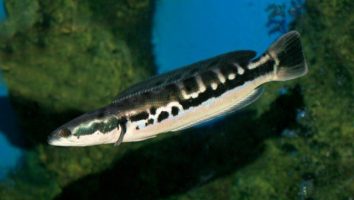The Banded Leporinus is a freshwater fish that is native to South America. It is a peaceful fish that is known for its hardiness and is a good choice for beginner aquarists.
This fish has a black body with three white horizontal stripes. The center stripe is the widest and the other two are narrower. There are also black spots on the fins.
The Banded Leporinus grows to a length of about 12 inches (30 cm).
Table of contents
Species overview
The banded leporinus (Leporinus fasciatus) is a freshwater fish that’s native to South America. It’s most commonly found in the Amazon Basin, which covers a large portion of Brazil, Peru, and Colombia.
This fish prefers slow-moving waters with a lot of vegetation. This is something that’s common among many species of leporinus (a type of freshwater fish).
The banded leporinus is a peaceful fish that does well in community tanks. They’re not known to be aggressive toward other fish and can even get along with fish that are significantly smaller than them.
One of the most notable things about the banded leporinus is their long lifespan. If they’re well cared for, they can live for up to 15 years!
Appearance

The first thing you’ll notice about this fish is their long and thin body shape. They have a very hydrodynamic build that allows them to swim quite quickly.
Their coloration is very unique and can vary quite a bit depending on the individual fish. They usually have a dark base color with light bands running horizontally across their body. These light bands are usually white or silver.
The fins on this fish are also quite unique. They have a long and thin dorsal fin that starts about halfway back on their body. This fin is tall and can be slightly curved.
Their anal fin is also long and thin and starts a little bit closer to the head than the dorsal fin. This fin is also tall, but not quite as tall as the dorsal fin.
The caudal fin on this fish is forked and symmetrical. It’s about the same height as the dorsal fin and anal fin.
The pectoral fins on this fish are also quite long and thin. They start close to the head and extend back quite a bit.
The ventral fins on this fish are also long, but not quite as long as the other fins. They start about two-thirds of the way back on the body and are thin and streamline.
Lifespan
The lifespan of banded leporinus is around 10 years. This is a relatively long lifespan for a freshwater fish.
Of course, as with any animal, there are a number of factors that can impact the lifespan of banded leporinus. Things like poor water quality, stress from bad tank mates, or a suboptimal diet can all shorten their lifespan.
Size
The Banded Leporinus typically reaches a length of about 6-8 inches, but some specimens have been known to reach almost a foot in length. These are relatively large fish, so they will need a tank that is at least 50 gallons in size.
Tank
Tank Size
The recommended tank size for banded leporinus is 150 gallons. If you want to keep a school of 6 or more fish, you’ll need an even larger tank.
Banded leporinus are relatively large fish and need a lot of space to swim. They’re also very active fish that need room to move around.
A 150 gallon tank is the minimum size we recommend but, if you can, go larger. The more space you can provide, the better.
Water Parameters
The Banded Leporinus is a freshwater fish that is native to South America. It is found in the Amazon River Basin in countries such as Brazil, Peru, and Colombia.
The Banded Leporinus is a tropical fish that prefers water with a temperature range of 72-82 degrees Fahrenheit. The pH level should be between 6.5 and 7.5 and the water hardness should be between 4 and 12 dGH.
What To Put In Their Tank
When it comes to setting up the interior of their tank, these fish don’t have any specific requirements. That being said, there are still some general guidelines you should follow.
As with most fish, we recommend starting with a layer of gravel on the bottom of the tank. This will serve as a base for the rest of your decorations and make it easier to keep the inside of the aquarium clean.
On top of the gravel, you can add whatever you want. These fish don’t have any preferences when it comes to plants or rocks. If you want to go with a heavily planted tank then that’s fine, just make sure the plants are anchored down well.
The same goes for rocks. If you want to create a rock formation or cave system then that’s great, just be careful that the rocks you use aren’t too sharp. These fish are notorious for scraping themselves on things, and you don’t want to make it worse.
One final note on decorations: avoid using anything that could potentially tear these fish’s fins. They have long fins that can get caught on things, so it’s best to be safe.
Common Diseases
These fish are pretty hearty and don’t often get sick. However, like any other fish, they can fall ill if the conditions in their tank are subpar.
The most common disease you’ll see in banded leporinus is hole-in-the-head disease. This disease is caused by poor water quality and the presence of activated carbon in the tank.
This will present itself as one or two pits/holes in the skin of your fish’s head. While it’s almost always curable (fixing your water quality and removing activated carbon is usually all you need to do), it will usually leave some scarring on your poor fish!
The other disease you might see is ich. This is a pretty common freshwater disease that can affect any fish, not just banded leporinus.
This will show itself as white spots on the body, fish, and gills of your fish. We won’t do a full ich treatment guide here (there are plenty of those online) but it’s something you need to take very seriously if it affects your fish.
Behavior & Temperament
The banded leporinus is a peaceful fish that does best in groups. They are known to be rather shy, so it’s best to keep them in a tank with other fish that won’t bother them.
They are also known to be jumpers, so it’s important to have a lid on their tank.
Banded leporinus are bottom-dwellers and do best in tanks with a sandy substrate. They like to burrow and will often create little tunnels that they hide in.
These fish are nocturnal, so you won’t see them much during the day. They are most active at night, when they come out to scavenge for food.
Tank Mates
The Banded Leporinus is a schooling fish, so it does best when kept in a group of at least six fish. They are also rather peaceful fish, so they do well with other peaceful fish that are of a similar size.
Some compatible tank mates for the Banded Leporinus include:
- Tetras
- Danios
- Rasboras
- Corydoras
- Plecos
- Loricariids
- Knifefish
- Other peaceful schooling fish
Breeding
Banded leporinus are a little more difficult to breed in captivity than some other species. They’re native to South America and prefer warm, slow-moving waters.
In the wild, they lay their eggs on leaves that are suspended above the water. The fry hatch and drop into the water below.
To recreate this environment, you’ll need a tank that’s at least 50 gallons. The water should be soft with a pH between 6.5 and 7.5. The temperature should be around 80 degrees Fahrenheit.
Add some live plants and driftwood for hiding places and spawning sites. The plants are important because the female will lay her eggs on them.
When everything is ready, add two females for every male. The males can be a little aggressive, so it’s best to err on the side of caution.
Feed the fish plenty of high-quality foods. Then, begin changing about 50 percent of the water. That should trigger spawning.
The female will lay her eggs on the plants. After she does that, the male will fertilize them. He will also guard them until they hatch.
It takes about a week for the eggs to hatch. When they do, the fry will drop into the water below. They’re too small to be seen, so don’t worry about them.
The fry will feed on microscopic organisms in the water. After a few weeks, they’ll be large enough to eat baby brine shrimp.
Conclusion
The Banded Leporinus is a great fish for anyone who wants to add a little bit of excitement to their tank. They’re not the easiest fish to care for, but they’re definitely not the hardest either.
With a little bit of knowledge and commitment, you can successfully keep these fish healthy and happy.
Overall, we think the Banded Leporinus is a great fish for anyone who wants to try something new. They’re definitely not your average fish, and that’s part of what makes them so fun to own!

